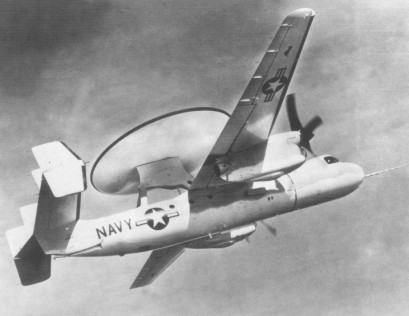See and Avoid
30 June 1956. Two airliners, a TWA Lockheed Constellation and a United Airlines DC-7 are eastbound, in uncontrolled airspace in the vicinity of the Grand Canyon. Both were flying under visual flight rules ostensibly to avoid the thunderstorms building in the area. At 1056 local, the DC-7 struck the Connie from above and behind, severing the tail and causing it to plummet to the canyon four miles below. The doomed DC-7 unable to maintain altitude, struck the top of an 800 ft cliff. All 128 people were killed.
31 August 1986. Aeromexico, Flight 498, a DC-9, was at 6,560 ft over Cerritos, CA collided with a Piper when the latter inadvertently entered the LAX terminal control area. The Piper fell into an unoccupied playground while the DC-9 crashed into a neighborhood destroying eleven homes and damaging seven others. All 67 aboard the Aeromexico, 3 aboard the Cessna and 15 on the ground were killed. Failure to “See and avoid” was cited as one of the causal factors of the case.
Those of us who have or presently are flying know how deceptively open the skies can be. When we do our preflight planning, we consult charts, Airman’s Information Manual, Notices to Airmen (NOTAM’s) and other planning aids to check the route of our flight for potential hazards. And yet there remain problems. In some areas it is congestion, mixing high density terminal arrivals and departures with general aviation using outlying airfields. Other areas it is special use airspace that is closed at times because of hazardous operations (including military training) or low level training routes (what, in an earlier age, we called “Oil Burner” routes). Regardless, while commendable progess has been made in decreasing the number of actual midair collisions, each year, on average, there are 30 midair collisions and thousands of near midair collisions internationally. Additionally, the number of unreported close calls in the United States alone may be much higher, according to the Federal Aviation Administration. New and creative means are sought or used to address this issue:
WASHINGTON, May 20, 2008 – General aviation officers and military safety officers are using an interactive Web site created and run by the Air National Guard to help eliminate midair collisions and close calls.
In 2005, a military training aircraft collided with a civilian crop duster, resulting in destruction of both aircraft and the death of the civilian pilot. Following that tragedy, the Air National Guard created the SeeAndAvoid.org Web site portal to help make the skies safer for pilots and passengers.
Adopted for use throughout the Defense Department in 2006, the SeeAndAvoid.org portal offers a centralized, credible Web site for civilian pilots and military safety officers. The site offers reciprocal information and education on airspace, visual identification, aircraft performance and mutual hazards to safe flight, with the ultimate goal of eliminating midair collisions and reducing close calls.
The portal features an easy-to-use graphical interface that permits aviators to locate reported midair collisions and near midair collisions on a Google-driven map, and then directly link to the FAA or National Transportation Safety Board official report on the incident.
That’s SeeandAvoid.org Open to use by the general flying public. The graphic above is taken from the site and shows an overlay of special use and military operating areas, low level training routes, airfields and minor airfields. We’ll add it to the blogroll and if you fly, we recommend you add it to your preflight planning. Fly safe out there folks!





OT: Dude! It’s Glenn Curtiss’ BDay! Flight Deck Friday early????? This is your realm, do Naval Aviation proud!
Back on topic:
Just a side note:
I’m aware of two mid-airs between planes and skydivers…one a civilian C-130 cargo hauler inbound to San Diego had a jumper from a C-182 impact the wing, then vertical stabilizer over the Lake Otay DZ in the 80s….Plane landed safely, jumper…well…not so much
Second, somewhere in the SW, a jumper hit the horizontal stabilizer of (I think it was) a C-206 (not his jump plane), jumper had a broken foot, plane had a mangled tail and crashed, killing the (I think again on the souls on board count) 4 occupants. That one, was late 80s time frame…may have been early 90s.
Both seem to be airspace management issues by powered thingys going into NOTAMed air.
Considering the big sky, little object issue, it’s a pretty remarkable record…and to think about 1.5M jumps were made in the US last year…and it’s been a long time since there’s been such accidents.
Moral of the story, like with motorcycles on the road…look (when VFR)! you might save a skydiver! (We can’t do IFR…but…I’ve heard… the inside of a could looks like cotton…only more ethereal)
Check NOTAMs for drop zones enroute.
Side side note: There have, however, been a number of incidents, back especially in the static line days, of parachutes over the tail, jumpers under same, shroud lines dangling both from the leading edge and causing structural damage to the flyinf surface structure, some fatal, some not, but the stories (if those who walked away) are hair raising. Of course, with AFF (Accelerated Freefall) training, of which was done with Johnny Carson many years ago, these such incidents have dropped to about zero.
Well, there went lunch… 😎
– SJS
And a worthy use of your time…Thanks!
Looks like Reuters agrees
– SJS
Geez…trade a no calorie intake lunch for a shot at big time exposure….
You’ve done well and all without thinking it would go very far…